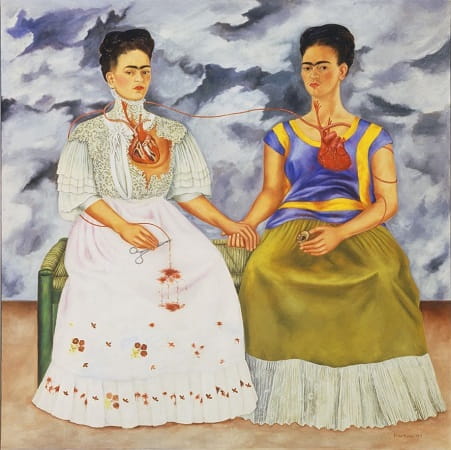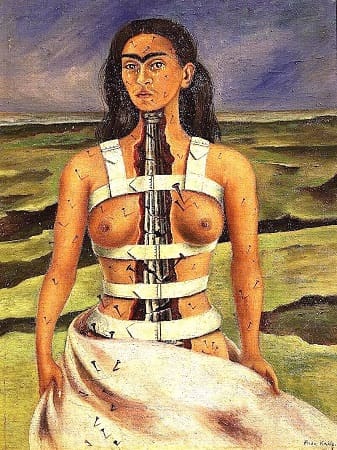Surrealism Art Movement
Welcome to our comprehensive guide on Surrealism, an art movement that delves into the depths of the subconscious and challenges the boundaries of reality.
In this article, we’ll uncover the origins, key characteristics, influential artists, and iconic artworks that have shaped the Surrealist movement. Join us on a mesmerizing journey through this enigmatic art form, renowned for its dreamlike imagery and thought-provoking symbolism. Explore Surrealism’s fascinating history and discover how it continues to captivate artists and art enthusiasts worldwide.
Surrealism Art Movement: A Glimpse into the Unconscious Mind
The Surrealism art movement emerged in the early 20th century, seeking to unlock the power of the imagination and liberate the creative spirit. Rooted in the Dada movement, Surrealism aimed to challenge societal norms and explore the depths of the unconscious mind. Through a blend of dreamlike imagery and unexpected juxtapositions, Surrealist artists aimed to evoke emotions, provoke thoughts, and question reality.
Recommended For You – 10 Famous Surrealist Artists You Should Know
Key Characteristics and Techniques of Surrealism
Surrealism, as an art movement, is characterized by a unique set of elements and techniques that distinguish it from other artistic styles. By incorporating these key characteristics, Surrealist artists aimed to create thought-provoking and emotionally evocative artworks that tapped into the depths of the unconscious mind.

The Lovers, 1928 Paris by Rene Magritte | The artwork is in the Museum of Modern Art (MoMA) – Surrealism Art Movement.
1- Juxtaposition and Unexpected Combinations
Surrealism often involves the juxtaposition of unrelated objects or ideas to create unexpected and intriguing visual combinations. By placing unrelated elements side by side, Surrealist artists sought to challenge conventional logic and evoke a sense of surprise and wonder in the viewer. This technique allowed them to explore the subconscious connections between seemingly unrelated concepts.

The Song of Love, 1914 by Giorgio de Chirico – Surrealism Art Movement.
2- Automatism and Spontaneous Creation
Automatism is a key technique employed by Surrealist artists. It involves the spontaneous and unpremeditated creation of art, allowing the subconscious mind to guide the artistic process.

Harlequin’s Carnival, 1924 by Joan Miro – Surrealism Art.
Artists would rely on automatic drawing or painting techniques, bypassing conscious control to tap into their inner thoughts and emotions. This approach aimed to reveal hidden truths and unleash the untamed creativity of the unconscious mind.
3- Dream Imagery and Symbolism
Dreams and the imagery associated with them play a significant role in Surrealist artworks.

Eine Kleine Nachtmusik, 1943 by Dorothea Tanning – Surrealism Art.
Surrealist artists sought inspiration from the dream realm, using dreamlike imagery to create mysterious and symbolic compositions. Symbolism, both personal and universal, was often incorporated to convey deeper meanings and provoke introspection. Through the use of potent symbols, Surrealist artists aimed to explore the realms of desire, fear, and the human psyche.
4- Visual Surrealism Techniques
Surrealist artists experimented with various techniques to bring their visions to life. Some notable techniques include frottage, which involves creating textures by rubbing objects against paper; decalcomania, a method of transferring paint between surfaces to create random patterns; and grattage, which entails scraping or scratching the paint surface to reveal underlying textures. These techniques allowed artists to introduce chance elements and unlock new realms of creativity.
5- Disruption of Reality and the Uncanny
Surrealist artworks often disrupt reality by distorting familiar objects or settings, creating a sense of the uncanny. By presenting everyday objects in unexpected or distorted ways, Surrealist artists aimed to challenge viewers’ perceptions and provoke deeper contemplation.

I Saw Three Cities, 1944 by Kay Sage – Surrealism Art Movement.
The uncanny nature of Surrealist artworks creates a tension between the familiar and the unfamiliar, inviting viewers into a world where reality merges with the extraordinary.
The combination of these key characteristics and techniques defines the essence of Surrealism, creating artworks that captivate, intrigue, and challenge our perceptions of reality. By pushing the boundaries of imagination and delving into the depths of the subconscious, Surrealist artists sought to unlock new avenues of artistic expression and tap into the enigmatic mysteries of the human mind.
Famous Surrealist Artists and Their Masterpieces
Surrealism attracted a remarkable array of talented artists who contributed significantly to the movement. These visionary individuals pushed the boundaries of artistic expression, crafting artworks that challenged norms, delved into the subconscious, and sparked the imagination.
1- Salvador Dalí (1904-1989)
Salvador Dalí is undoubtedly one of the most recognizable figures of Surrealism.
Salvador Dalí’s iconic paintings, such as “The Persistence of Memory” (1931) with its melting clocks and “The Elephants” (1948) featuring enigmatic elephants with spindly legs, captivate viewers with their dreamlike and often unsettling imagery.

The Persistence of Memory, 1931 by Salvador Dalí – Museum of Modern Art, New York – Surrealism Art.
Recommended For You – The Persistence of Memory Analysis: Decoding Salvador Dalí’s Masterpiece

The Elephants, 1948 by Salvador Dali – Surrealism Art Movement.
Dalí‘s meticulous attention to detail and his ability to render fantastical scenes with remarkable precision established him as a master of Surrealism.
2- René Magritte (1898-1967)
René Magritte’s works challenge the viewer’s perception of reality and the ordinary. Known for his thought-provoking paintings like “The Treachery of Images” (1929) featuring a pipe with the inscription “Ceci n’est pas une pipe” (This is not a pipe), Magritte explored the power of language, symbolism, and the enigmatic nature of objects. His works often feature juxtapositions, unexpected transformations, and obscured faces, inviting viewers to question the nature of representation and reality itself.

The Treachery of Images (Ceci n’est pas une pipe (This is not a pipe)), 1929 by Rene Magritte – Surrealism Art.
3- Max Ernst (1891-1976)
Max Ernst‘s contributions to Surrealism were marked by his experimentation with various techniques and his innovative approach to art-making. He developed the frottage technique, using rubbings from various textures to create imaginative compositions.

The Elephant Celebes, 1921 by Max Ernst – Surrealism Art Movement.
One of his notable works, “The Elephant Celebes” (1921), showcases his ability to fuse diverse visual elements, resulting in a striking and mysterious composition. Max Ernst’s works frequently explore themes of transformation, mythology, and the inner workings of the mind.
4- Frida Kahlo (1907-1954)
While Frida Kahlo’s art was not exclusively Surrealist, her works often incorporated Surrealist elements and themes. Through her deeply personal and introspective paintings, such as “The Two Fridas” (1939) and “The Broken Column” (1944), Kahlo explored her own experiences, emotions, and physical pain. Her art often included symbolic elements, dreamlike imagery, and a raw, unfiltered depiction of the self. Kahlo’s unique blend of Surrealism and her exploration of identity and personal struggles continue to inspire artists and audiences worldwide.

The Two Fridas, 1939 by Frida Kahlo – Surrealism Art.

The Broken Column, 1944 by Frida Kahlo – Surrealism Art.
Recommended For You – 10 Famous Surrealist Artists You Should Know
5- André Masson (1896-1987)
André Masson’s artworks frequently showcased the raw, spontaneous, and emotional aspects of Surrealism. He experimented with automatic drawing and painting techniques, allowing his subconscious to guide his brush.
One of his notable works, “Battle of Fishes” (1926), is a prime example of his fluid, gestural style and his ability to create evocative and expressive compositions.

Battle of Fishes, 1926 by André Masson – Surrealism Art Movement.
Masson’s works often explore themes of mythology, sexuality, and the primal instincts of human nature.
These artists, along with many others, played pivotal roles in shaping the Surrealist movement and leaving a lasting impact on the art world. Through their visionary works, they challenged artistic conventions, expanded the possibilities of artistic expression, and ignited the imagination of generations to come.
Surrealism’s Enduring Influence
Surrealism‘s impact extends far beyond the boundaries of the art world. The movement’s revolutionary ideas and imaginative techniques left an indelible mark on various aspects of culture and continue to inspire creative endeavors to this day.
1- Literature and Poetry
Surrealism had a profound influence on literature and poetry, shaping new ways of storytelling and artistic expression. Writers like André Breton, the founder of the Surrealist movement, and Paul Éluard embraced automatic writing techniques, allowing their words to flow freely from the depths of the unconscious.
Surrealist literature aimed to blur the line between reality and dreams, tapping into the rich realm of the subconscious mind.
2- Film and Cinema
Surrealism’s impact on the world of cinema is undeniable. Filmmakers such as Luis Buñuel and Salvador Dalí collaborated on the groundbreaking film “Un Chien Andalou” (1929), which exemplified the Surrealist spirit through its fragmented narrative, dreamlike sequences, and provocative imagery.
Surrealist elements, such as unexpected juxtapositions and absurd narratives, continue to inspire filmmakers who seek to challenge traditional storytelling conventions and evoke a sense of wonder and exploration.
Recommended For You – 10 Best Movies About Famous Artists
3- Fashion and Design
Surrealism’s influence extended to the realm of fashion and design, challenging traditional aesthetics and embracing unconventional forms.
Designers like Elsa Schiaparelli, in collaboration with artists like Salvador Dalí, incorporated Surrealist motifs and unexpected elements into their creations. This fusion of art and fashion resulted in innovative designs that defied expectations and pushed the boundaries of conventional attire.
4- Advertising and Pop Culture
Surrealist aesthetics and ideas have often been employed in advertising campaigns and popular culture references.
The use of dreamlike imagery, unexpected combinations, and visual illusions draws inspiration from Surrealist techniques. Surrealism’s impact on advertising has helped create memorable and attention-grabbing visuals, captivating audiences and influencing consumer culture.
5- Contemporary Art and Beyond
Surrealism’s legacy continues to resonate strongly in contemporary art practices. Many artists draw inspiration from Surrealist themes, incorporating dreamlike elements, symbolism, and unconventional imagery in their works.
Recommended For You – What is Postmodern Art?
Surrealism’s emphasis on the exploration of the subconscious and the questioning of reality continues to provide a rich source of inspiration for artists who seek to challenge conventional norms and push the boundaries of artistic expression.
In conclusion, Surrealism‘s enduring influence is a testament to its ability to transcend the art world and resonate across multiple disciplines. By challenging societal norms, embracing the power of the imagination, and delving into the depths of the subconscious, Surrealism has left an indelible mark on literature, film, fashion, advertising, and contemporary art. Its ability to evoke emotions, provoke introspection, and ignite the imagination ensures that Surrealism will continue to captivate and inspire generations to come.
References:
- https://www.moma.org/collection/works/79933
- https://blog.artsper.com/en/a-closer-look/10-surrealist-paintings-you-should-know/
- https://www.artsy.net/artwork/salvador-dali-the-persistence-of-memory
- https://www.dalipaintings.com/elephants.jsp
- https://www.renemagritte.org/the-treachery-of-images.jsp
- https://www.max-ernst.com/the-elephant-celebes.jsp
- https://www.moma.org/collection/works/79309








